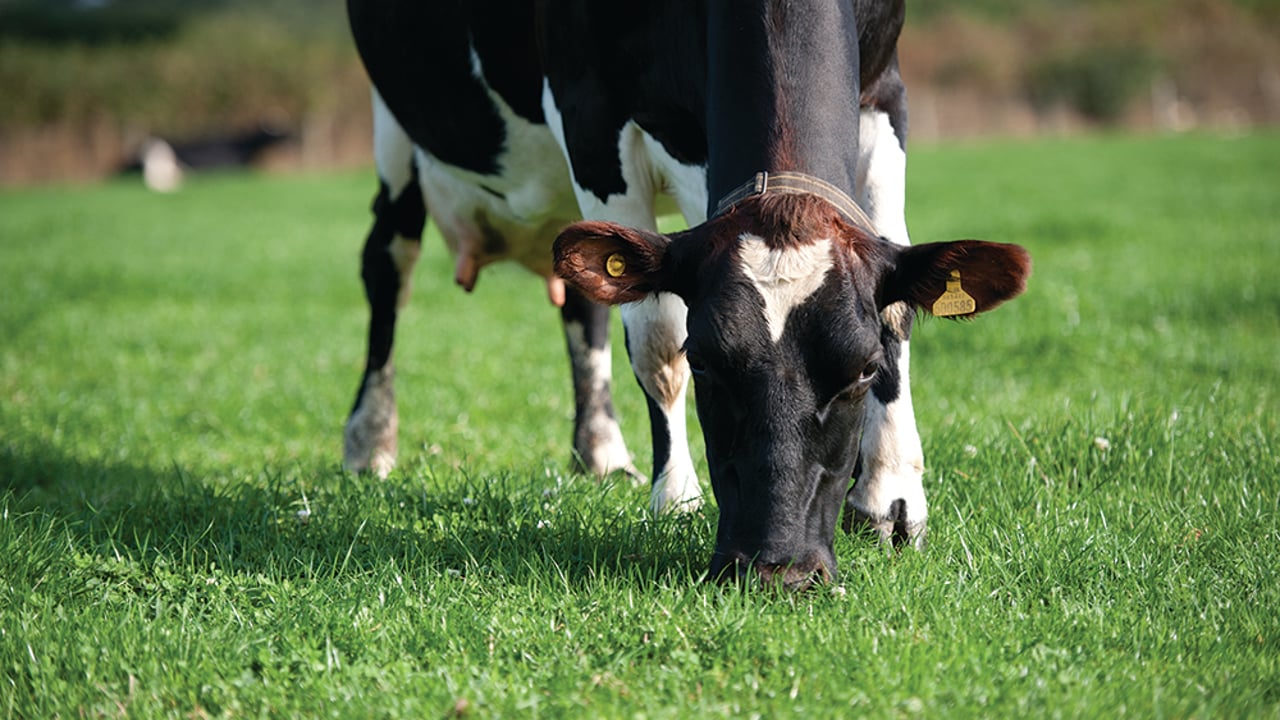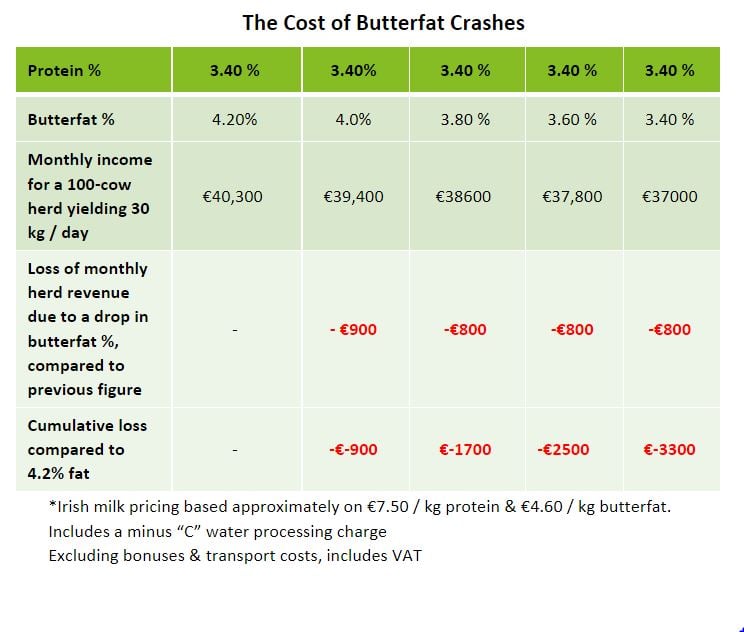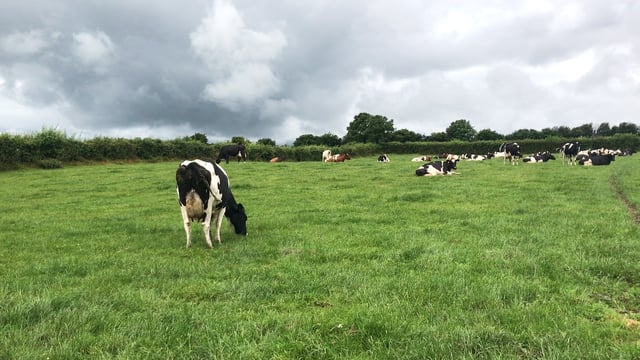Sponsored Article

Sponsored Article
Do you see milk butterfat crash during April and May?
Sponsored Article

Many Irish dairy herds see milk butterfat levels crash in the spring. This could be costing you up to €3,300/month and, with huge cost pressure this season, can you afford to lose out?
The lush, leafy swards typically seen at this time of year are great for milk production and milk proteins. But this highly digestible grazed grass is generally rich in rapidly fermented sugars and low in structural fibre content and can lower rumen pH and promote a condition called SARA – sub-acute rumen acidosis.
This significantly impacts on rumen efficiency, herd performance and fertility. What’s more, SARA can have a significant impact on milk solids yield and consequently milk price.
It can often go undetected but there are some simple warning signs that you can look out for that can indicate a potential problem with SARA in your herd at this time of year.
Look at dung:
Assess rumen fill:
Are cows cudding well:
Are cows losing weight:
What’s happening with milk quality:
The below table 'The Cost of Butterfat Crashes' illustrates the effect on profitability of a sharp drop in butterfat levels on a 100-cow herd over the course of one month.
Research has shown that you can reduce the risk of SARA in your herd by adding Actisaf Sc 47 live yeast to your compound feed. Farmers can rest assured that if SARA does become an issue, Actisaf will stabilise rumen function and pH, minimising negative impacts on performance and cow comfort.
Even when SARA isn’t a problem, Actisaf significantly improves rumen efficiency, leading to increased digestion, better utilisation of grass and increased milk solids yield.
Phileo UK and Ireland recommend that Actisaf is included at a minimum rate of 1-2kg/t of compound feed depending on the compound feed rate, which will cost approximately €10-20/t.
Find out more about SARA at grass and how Actisaf can help with the below resources:
Click here, to read a guide on how Actisaf reduces the risk of SARA at grass.
Click here, to learn how one grass-based dairy farmer has seen the benefits of using Actisaf at grass.
Recent research from the University of Nottingham found that supplementing Actisaf to a high performing herd in the first four months of lactation increased feed efficiency by 5.5%.
This was achieved primarily through increased digestion of fibre in the rumen, which yielded an extra 5.9% (or 2.8kg) of energy corrected milk with no change in feed intakes or body condition loss – providing an 8:1 return on the cost of Actisaf.
Effectively, the cows reached higher peak yield, and were projected to produce up to 580L of extra milk per 305-day lactation consequently lowering cost of production by more than 1c/L.
For a farm supplying one million litres this equates to €10,000/year, presenting a significant opportunity for Irish dairy farmers to reduce costs this spring and summer.
Sponsored Article







